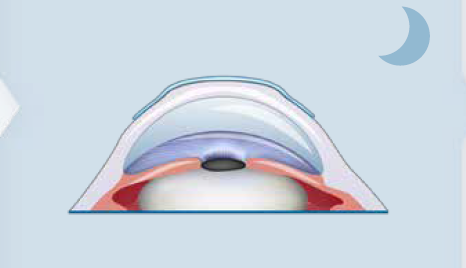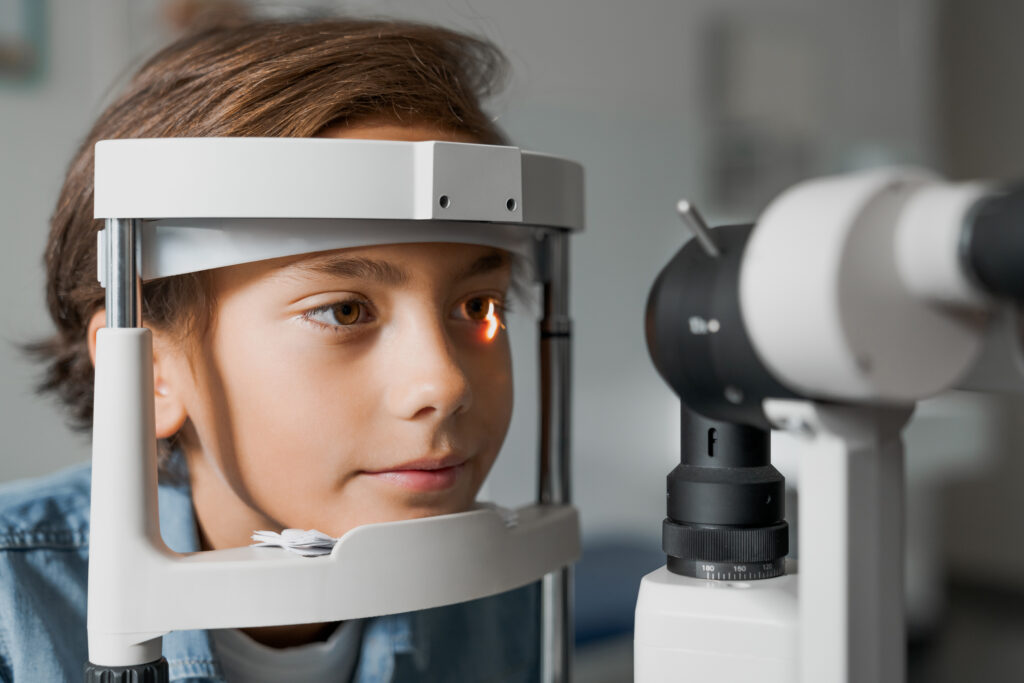A good orthokeratology candidate is usually a patient who is a low to moderate myope. They either have progressing myopia, or they desire the freedom from daytime glasses or contact lenses. Typically, we see this the most in the childhood population, as they are the ones who need myopia management the most. However, we also see a lot of patients, both kids and adults, who are very active, whether they’re playing sports or enjoy being outdoors. There are certainly exceptions outside of this, but this is a good place to start for OrthoK candidates.
When I’m considering starting OrthoK on a new patient, I always start with talking to the patient and getting to know them. I ask them what they like to do for fun outside of school or outside of work, and usually they’re open with answering my questions.
Analyzing Both Objective and Subjective Data
When determining which OrthoK lens is best for each specific patient, we consider both objective and subjective data. In terms of objective data, we look at refractive error, HVID, and pupil size because we want to determine and measure glare control. For subjective data, we ask lifestyle questions and get an idea of what the patient’s goals are with OrthoK. If the patient wants to see well without glasses during the daytime, we can talk about if that’s a realistic treatment result for them.
In other cases, we have conversations where we’re setting more realistic expectations for our patients. Fitting OrthoK on a child is usually different from fitting OrthoK on an adult. In my experience, a lot of children are very tolerant of glare issues or uncorrected astigmatism. They’re able to tolerate and adapt to some some amount of blur, and they can still function well. Some adults can be very observant and notice those symptoms. I try to have the conversations before the fitting to set expectations regarding glare, distortions, and visual acuity. In my experience, getting ahead of these issues tends to lead to better outcomes for my patients.
A Wide Variety of Methods for Fitting OrthoK
When using OrthoK, we fit the lenses using a variety of methods: empirical fitting, diagnostic fitting, fitting sets, calculators, and software. It’s great that we have access to all of these tools. When I first learned to fit OrthoK, we used a slide rule that suggested which initial lens to fit based on the patient’s prescription and K’s. Now, we have so many tools to streamline that process. Different manufacturers have software to aid in OrthoK fitting. When I have the time, I do still like to put the lens on the patient’s eye because that still gives me vital information.
In terms of picking a fitting method, that choice comes down to how much chair time I have. Typically, if I am able to have the patient come in, I would try to put a lens on them. With some patients with higher refractive errors or flatter corneas that have higher complexity, I’d jump straight into the topographical fitting.
The Importance of Chair Time
Chair time is a big factor when fitting OrthoK. Some patients come in and they’re a slam dunk case. We know that when we order the lens, that lens will fit the patient right away. We won’t need to order any lens exchanges or modifications, and those patients are going to be easier overall. However, some patients have higher prescriptions or flatter corneas, and those patients I always anticipate more chair time because I usually have to order a few sets of lenses before we find the one that’s ideal for them.
This is something I talk about with the patients right from the beginning. We discuss how many appointments they’re likely going to have, how long each appointment will be, etc. If it’s going to be a long process, I want them to be prepared.
The Magic of OrthoK
The primary benefit of OrthoK is myopia management. That’s the number one goal. I think that the secondary benefit of OrthoK is being free from glasses and contacts, as this drastically affects the patient’s lifestyle. They don’t have to keep wearing glasses or daytime contacts. They can be freer to pursue sports or other outdoor activities. The majority of patients love OrthoK. They feel like it’s magic. I had a patient’s mom tell me OrthoK was a miracle, and though it’s just science, I feel lucky to be an OrthoK provider and provide that sense of a miracle to my patients.





